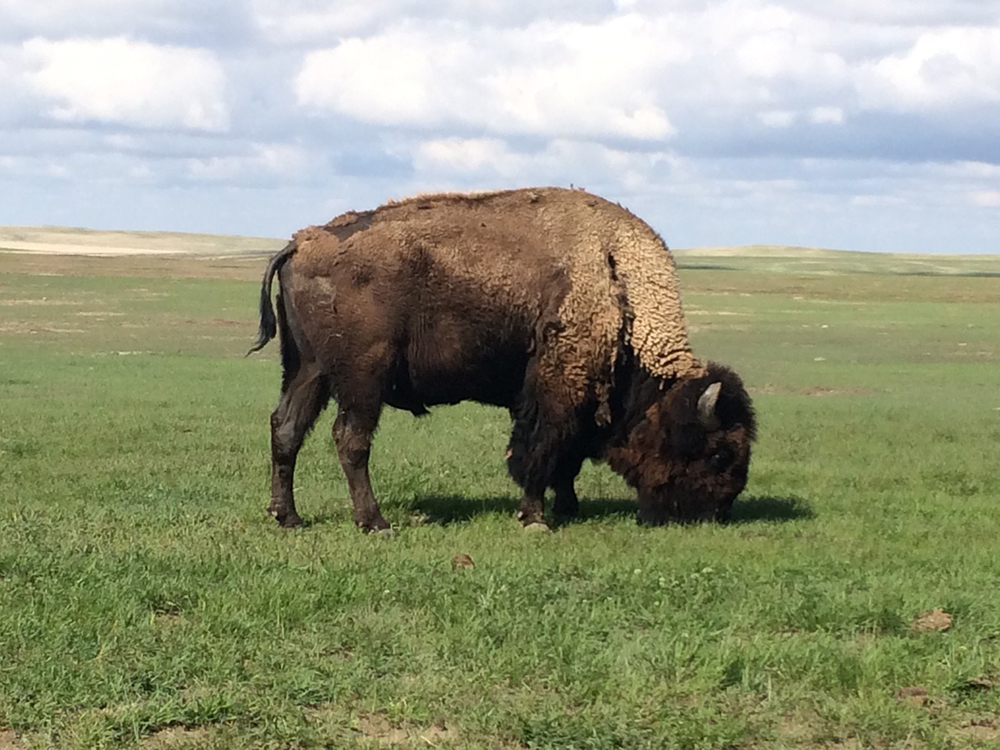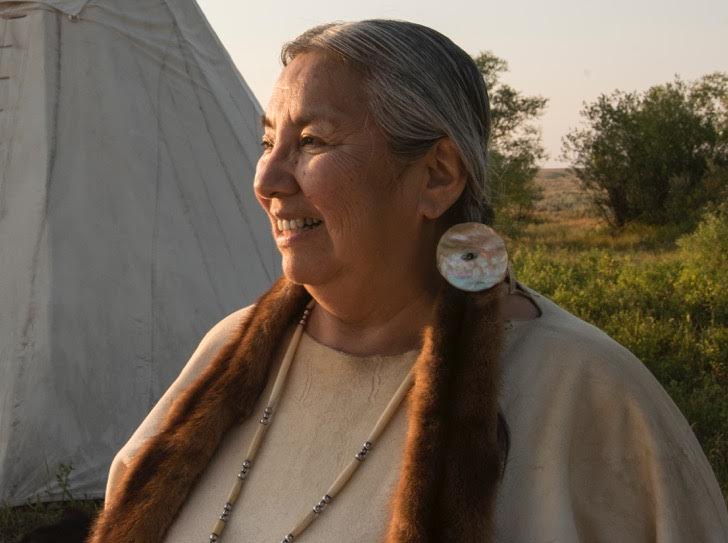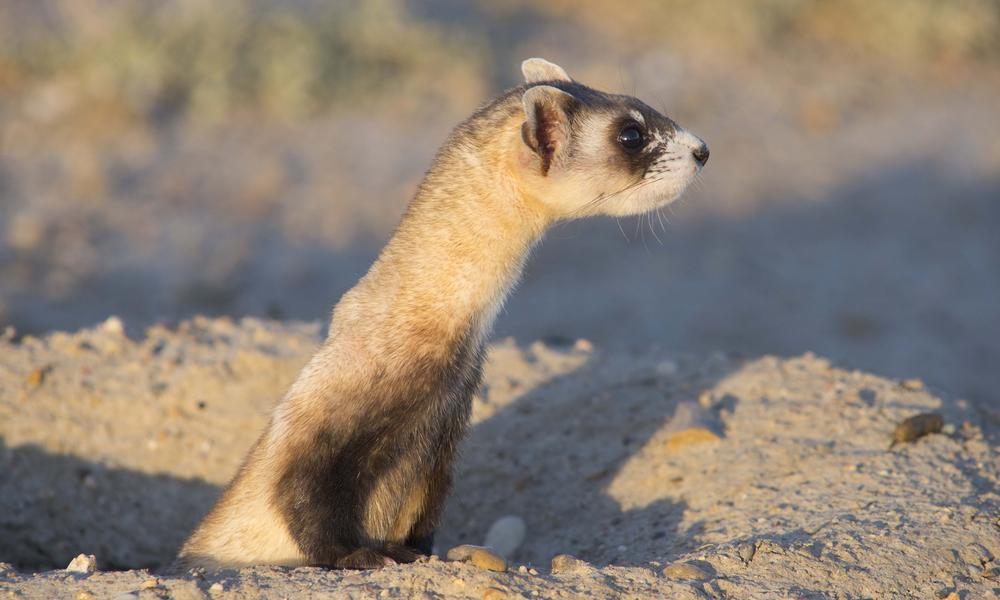Male longhorn bees sleeping on grassland vegetation. Image courtesy of WWF US / Clay Bolt
“All wildernesses speak the same language, if you know how to listen.
Since 2010 on average over a million acres of grassland have been plowed up across the Northern Great Plains for row crop agriculture…. It rarely makes headlines. Where is the public outcry?”
The Northern Great Plains is one of the world’s four remaining intact temperate grasslands. Made up of 180 million acres in the US and Canada, it is home to countless species, including the endangered black footed ferret. Keeping the grasslands intact is crucial to conserve biodiversity. Keeping these lands as grasslands also means less fertilizer runoff from row crop agriculture, more carbon absorption, and cleaner streams.
Black-footed Ferret. Image courtesy of WWF
One WWF initiative is to restore populations of black-footed ferrets to the region. The biggest threat to the black-footed ferrets is the sylvatic plague that is rampant among their prey - prairie dogs. To grow the black-footed ferret population to sustainable numbers, we must help WWF raise funds to mitigate the plague.
Plague mitigation at Fort Belknap, in Montana, the 6th federally-designated black-footed ferret reintroduction site, and the first reintroduction to occur on Tribal land costs $25 an acre. With 2000 acres at this site, it costs $50,000 annually. Additionally, annual prairie dog and ferret monitoring and vaccination costs $35,000, for a biologist and technicians.
In South Dakota, WWF is working with the Rosebud Sioux Tribe's Department of Natural Resources and Game, Fish and Parks to reintroduce black-footed ferrets. The goal for this project is to build a common understanding of the opportunities and challenges facing communities and Tribal programs alike that leads to the creation of an inspiring, community-supported conservation area.
Another aspect of WWF’s NGP Program is sustainable ranching. When properly managed, cattle and bison can have conservation benefits, as grazing maintains the health of grasslands, improves the quality of the soil and keeps the land as a possible wildlife habitat, instead of turning it into cropland. WWF has been working with ranchers throughout the Northern Great Plains region to develop more holistic practices in ranching. During our Advisory Committee Meeting, we had the most wonderful dinner out in the plains with some of the ranchers. It was catered by Kimberly Tilsen-Brave Heart, an amazing woman of Oglala Lakota Nation of the Pine Ridge Indian Reservation in South Dakota.
We must never forget the fragility of this most magnificent land. We must listen.











